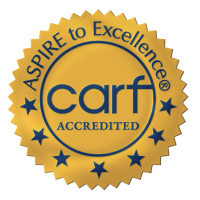Characteristics of an Enabler
- Low self-esteem: Enablers often struggle with their self-worth, feeling needed only when they are taking care of someone else.
- Avoidance of conflict: They may avoid discussing the addiction to keep the peace, leading to a lack of accountability.
- Dependency on the relationship: Enablers might feel that their role is crucial, creating a cycle of dependency.
The Psychological Impact of Enabling
Living as an enabler can have significant psychological repercussions. Constantly trying to control the addict’s behavior often leads to anxiety, frustration, and even resentment. Over time, the emotional toll can manifest into mental health issues, including depression and feelings of isolation. Enablers may find themselves trapped in a cycle of guilt and shame, believing that they are failing the addict if they do not intervene. This internal conflict can lead to a distorted sense of reality where the enabler prioritizes the addict’s needs over their own, often neglecting their well-being in the process.
The enabler may also face social isolation as they become increasingly consumed by the addiction, withdrawing from their own support systems. This can create a vicious cycle where the enabler feels even more alone and burdened, further entrenching them in their role.
 When addiction strikes, it doesn’t just affect the individual—it ripples through the entire family. With an estimated 70 million adults in the U.S. reporting struggles with substance use or mental health issues, the need for effective treatment and understanding of family dynamics in addiction has never been clearer. Family roles, such as enablers or caretakers, often unconsciously perpetuate the cycle of dependency.
When addiction strikes, it doesn’t just affect the individual—it ripples through the entire family. With an estimated 70 million adults in the U.S. reporting struggles with substance use or mental health issues, the need for effective treatment and understanding of family dynamics in addiction has never been clearer. Family roles, such as enablers or caretakers, often unconsciously perpetuate the cycle of dependency.
At Adelante Recovery in Orange County, California, we recognize the pivotal role that family plays in both addiction and recovery. Through our specialized detox, residential treatment, and dual diagnosis programs, we offer a compassionate, holistic approach that supports individuals in their healing while empowering families to break free from harmful patterns and build a stronger foundation for lasting recovery.
The Concept of Family Roles in Addiction
Family roles in addiction refer to the distinct functions that family members adopt when a loved one is struggling with substance use disorder. These roles can be both adaptive and maladaptive, influencing how family members cope with stress and manage their relationships. Recognizing and addressing these roles can be an important step in the recovery process.
Defining Family Roles
Family roles can manifest in many forms, but they typically fall into six specific categories. These common roles include:
- The Addict
- The Enabler (Caretaker)
- The Hero
- The Scapegoat
- The Mascot (Clown)
- The Lost Child
Each role serves a purpose within the family system but often perpetuates dysfunction. These roles are not fixed and individuals may shift between them as the dynamics of the family change over time, especially as recovery progresses or relapses occur.
The Addict: The Individual Battling Substance Use
“The Addict” is the central figure around whom much of the family’s attention and energy revolves. This role is characterized by the individual’s struggle with substance use, which often leads to significant disruptions in family life. The addict’s behavior and needs can dominate family interactions, creating a cycle where other family members adapt their roles and behaviors in response to the addiction.
The presence of an addict in the family can lead to various coping mechanisms among family members. This central role often drives the formation of other family roles, like the enabler or the hero, as family members try to maintain some semblance of normalcy or control in an otherwise unstable environment.
Characteristics of the Addict:
- Preoccupation with Substance Use: The addict often prioritizes obtaining and using their substance of choice above other responsibilities and relationships.
- Denial: They may refuse to acknowledge the extent of their addiction or its impact on themselves and their loved ones, often minimizing or rationalizing their behavior.
- Manipulation: To maintain their addiction, they might manipulate family members, using guilt, blame, or charm to get what they need, such as money or support.
The Inner Struggle of The Addict
Many addicts grapple with acknowledging the severity of their addiction. They may oscillate between denial and moments of clarity where they recognize the impact of their substance use on themselves and their loved ones. Addicts also frequently experience deep feelings of shame and guilt about their behavior and its consequences. This can lead to a cycle of using substances to numb these painful emotions, which in turn perpetuates the addiction.
A significant part of the struggle is the feeling of losing control over their substance use. Despite intentions to cut back or quit, they may find themselves unable to do so, leading to frustration and despair. Despite these struggles, many addicts have an underlying desire to recover and lead a healthier life. This internal conflict between wanting to change and feeling trapped by addiction is a significant part of their inner turmoil.
The Enabler: Unintentionally Supporting the Addiction
The enabler in a family may be someone who seeks to protect the addict from the consequences of their behavior. While their intentions are often rooted in love and concern, enabling behavior can inadvertently reinforce the addiction. Enablers may take on excessive responsibilities, cover up problems, or even provide financial support that allows the addiction to continue. This cycle can become a complex web where the enabler feels compelled to act, believing that their actions are the only way to help the person they care about, while in reality, they may be prolonging the addiction and preventing the addict from facing the necessary consequences of their actions.
The Hero: Overcompensating for the Family’s Struggles
The hero is commonly the family member who takes on the responsibility of maintaining a façade of normalcy. This role is often assumed by the eldest child or a sibling who feels they must step up in light of the chaos caused by addiction. While heroes often excel at school or work, their efforts can mask the deeper issues within the family. They may become the go-to person for emotional support, inadvertently taking on the role of a caretaker for their parents or younger siblings, which can lead to a skewed sense of responsibility that is difficult to shake off.
Traits of the Hero Role
- Highly responsible: The hero often strives for perfection, believing that their accomplishments will balance out the family dysfunction.
- Attention-seeking: Heroes may feel they need to constantly validate their worth through achievements.
- Emotional suppression: They might struggle to express their difficulties, focusing instead on appearing strong for the family.
The Emotional Burden on the Hero
While the hero adopts a facade of strength, this responsibility can become a heavy emotional burden. The pressure to succeed and maintain the appearance of stability often leads to stress and burnout. Over time, the hero might struggle with anxiety and depression, as they feel the weight of unmet needs and unresolved issues that need addressing. This internal conflict can manifest in various ways, such as perfectionism that leaves little room for mistakes or a relentless drive to achieve that can alienate them from others. The hero may find themselves caught in a cycle of overachievement, only to feel emptiness when they realize that their accomplishments do not fill the emotional void created by their family’s struggles.
The Scapegoat: Diverting Attention from the Problem
This family member frequently acts out or displays problematic behavior, which can divert attention away from the actual addiction. While the scapegoat absorbs blame for family issues, their behavior often reflects the underlying chaos of the family system.
Identifying the Scapegoat Role
Identifying the scapegoat can be crucial in understanding family dynamics. Typical behaviors include acting out in school or exhibiting rebellious actions. The scapegoat often becomes the focus of the family’s frustrations, allowing other members to avoid discussing the addiction directly. As a result, the addiction remains unaddressed while the scapegoat suffers.
The Scapegoat's Coping Mechanisms
To cope with the misattributed blame, scapegoats may develop various defense mechanisms. These could include substance abuse, anger, or even withdrawal from family interactions altogether. Such coping mechanisms are often counterproductive and prevents the individual from seeking help or addressing their own feelings of pain and resentment.
The Mascot: The Family Jester
The mascot or “clown” is a role often taken on by a family member who uses humor and playfulness to diffuse tension and lighten the mood in a household affected by addiction. While the Mascot’s intentions are often positive, this role can prevent them from addressing their own emotional needs and contribute to the overall dysfunction within the family dynamic.
The Role of the Comedian in the Family
The mascot often tries to distract the family from the stress and chaos caused by addiction through jokes, humor, and entertaining behavior. This can provide temporary relief from the emotional strain. By being the center of attention, the Mascot diverts focus away from the addict and the family’s problems, albeit temporarily. This can sometimes mask their own feelings of pain or anxiety.
How Playing the Comic Relief is Not Always Funny
The individual in the mascot role may suppress their own emotions and needs, prioritizing humor over genuine expression. This can lead to unresolved emotional issues and a lack of personal growth. By focusing on humor, the Mascot can inadvertently encourage the family to avoid addressing the underlying issues of addiction. This diversion can prevent the family from seeking necessary help or having important conversations about recovery and healing.
The Lost Child: The Silent Sufferer
The lost child is often the most invisible role within a family struggling with addiction. This family member tends to withdraw, avoiding attention and conflict while silently suffering. They may find solace in solitude or escape through fantasies, leading to emotional isolation that can persist long into adulthood.
Understanding the Lost Child Role
The lost child often learns that their needs are unmet, leading them to believe that silence is the best way to cope. They may develop a habit of fading into the background, often feeling overshadowed by the dominant dynamics created by the addict. Emotional suppression becomes a means of self-preservation.
The Long-Term Effects on the Lost Child
Long-term effects of the lost child role can manifest as issues with self-identity, difficulties in relationships, and chronic feelings of inadequacy. As adults, lost children may struggle to assert their needs and desires, often repeating patterns of neglect in their relationships. Recognizing and healing these experiences is crucial for moving toward a healthier family dynamic.
The Impact of Addiction on Family Dynamics
Addiction can disrupt the structural integrity of family units, leading to conflict, confusion, and emotional pain. Family members may find themselves at odds or disconnected due to the stress and chaos that addiction brings. Communication often breaks down, leading to misunderstandings and resentment. The stigma associated with addiction can isolate families, compounding these issues. This isolation can prevent families from seeking help, as they may fear judgment or misunderstanding from friends and community members.
It’s important to note that the impact of addiction extends beyond immediate family members, affecting extended family and even close friends. Relationships that were once supportive may become strained, as loved ones grapple with their own feelings of helplessness and frustration. The ripple effects can lead to a broader sense of disconnection within the social network, making it even harder for the individual struggling with addiction to find the support they need.

Learn More About Adelante Recovery. We Can Help You Beat Addiction!
Understanding the roles each family member assumes in the face of addiction is a crucial step toward breaking unhealthy cycles and fostering true healing. By recognizing these dynamics, families can begin to address the emotional and relational challenges that often accompany addiction. At Adelante Recovery in Orange County, California, we are committed to helping both individuals and families heal through our comprehensive approach.
Our dedicated team provides a supportive environment where families can rebuild trust, strengthen connections, and work through the impact of addiction together. With a focus on compassionate, evidence-based care, Adelante Recovery can help you and your loved ones take the first steps toward lasting recovery and a healthier, brighter future. Your family’s healing starts here. Contact us today.

